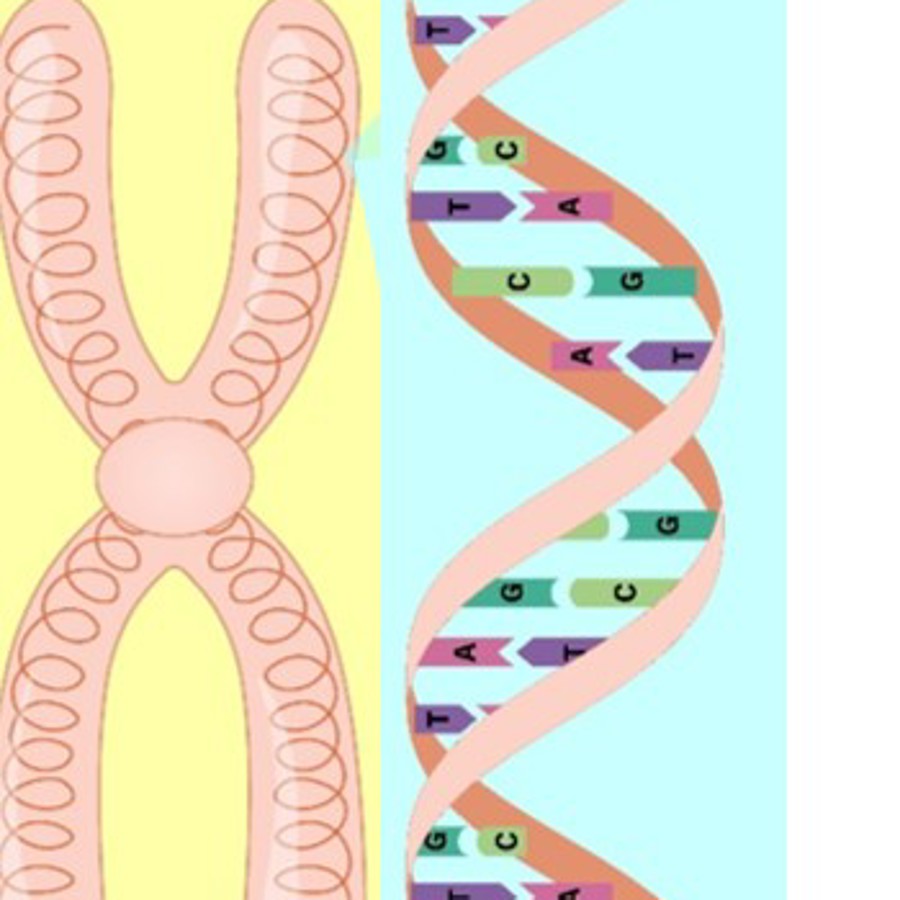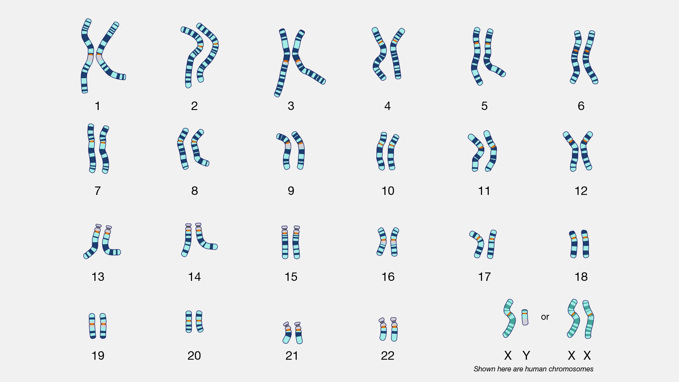
If I had a genetic test done that looked at my chromosomes, would it have ruled out all genetic disorders?
March 18, 2025

- Related Topics:
- DNA sequencing,
- Genetic conditions,
- Genetic testing
A curious adult from Washington asks:
"If I had a genetic test done that looked at my chromosomes, would it have ruled out all genetic disorders?"
Have you ever done a genetic test? Often, if someone is suspected to have a genetic condition, a healthcare provider will order a genetic test. Different types of tests look at different aspects of our genetic information, allowing us to detect different kinds of genetic conditions. This will make more sense once we explore how our genetic information is organized.
Our genetic information is our genes and our chromosomes, which contain all of the instructions that tell our body how to look, grow, and develop. If we are thinking of our genetic information like a book of instructions, the individual letters in the book would be like our DNA. DNA is a string of four letters–A, G, C, and T–that create a code that our body can read through to understand its instructions. Our genes are like the sentences in the book. Genes are groups of DNA letters that tell our body how to do specific functions, just like the way sentences have specific meanings to help tell a story. Our chromosomes would be like the chapters in the book since they are made up of large collections of genes.
Some genetic tests count to make sure none of our chromosome “chapters” are missing. Other genetic tests look to see if there are any words misspelled in our gene “sentences”, and some genetic tests make sure that there aren’t extra or missing pages in the book.

Counting Chromosomes
A karyotype is a test that looks at a person’s chromosomes. Most commonly, a human has 46 chromosomes organized into 23 pairs. Sometimes, someone can have an extra chromosome or a missing chromosome. Just like extra or missing chapters in a book can change the story, extra or missing chromosomes in a human can lead to differences in the instructions for the body, and when the body has different instructions, it can lead to health concerns.
So, if someone has a health condition that looks like it could be caused by an extra or missing chromosome, a healthcare provider can order a karyotype. To do the test, they would collect cells from your body, such as from blood, and grow the cells in a laboratory. Then, steps are done to prepare the chromosomes so they can be viewed under the microscope. By looking at the chromosomes under the microscope, scientists can make sure that someone has the typical number of chromosomes, and check that the chromosomes don’t have extra (duplicated) or missing (deleted) pieces, or pieces that have been moved around (translocation).
One condition that can be diagnosed by a karyotype is Trisomy 21, or Down Syndrome. An individual with Down Syndrome would have a karyotype that has 47 chromosomes instead of 46, because an extra chromosome, chromosome 21, causes Down Syndrome.

Sequencing Sentences
Gene sequencing is a test that reads through the DNA code that makes up a gene. Since genes are like sentences that provide important information in our body’s instruction manual, a misspelling in a gene “sentence” can change the meaning of the sentence. These misspellings in a gene can lead to health concerns. Gene sequencing can read through the DNA letters that make up our gene “sentences” and look for misspellings that might cause health concerns.
Many scientists have researched genes that are associated with different diseases, and have found which genes cause different symptoms or conditions. Thus, if someone has a symptom or condition that a healthcare provider thinks could be genetic, they will typically do gene sequencing to read through the letters in the genes where a misspelling could lead to the symptoms or condition the person is experiencing.
One condition that can be diagnosed with gene sequencing is cystic fibrosis. Cystic fibrosis is caused by a misspelling in a gene called CFTR. Gene sequencing can read through the DNA letters of the CFTR gene and find if someone has a misspelling that causes cystic fibrosis.

What about changes in the book that are bigger than sentences but smaller than chapters?
Sometimes the difference in someone’s genetic information that causes a disease is bigger than a change to a single gene, but smaller than a chromosome being duplicated, deleted, or moved around. This would be like pages in a book being added or missing–just like misspelled sentences and missing chapters, this can also change the meaning of the body’s instructions, leading to health conditions.
A microarray is a test that looks for sections of genetic information–larger than genes but smaller than chromosomes–that might be extra (duplicated), missing (deleted), or moved (translocation). There are many genetic conditions that are caused by the deletion, duplication, or translocation of large sections of genetic information, but these could be missed if only karyotyping or gene sequencing was completed.
One condition that can be diagnosed with microarray is Phelan-McDermid syndrome. Phelan-McDermid syndrome is caused by a section of chromosome 22 being deleted. Microarray can detect the missing section and diagnose the condition.
Which test is best?
We have discussed three tests that can be used to learn more about someone’s chromosomes and genes. Each test has its own purpose– a karyotype looks at chromosomes, a microarray looks at missing and extra pieces that are smaller than chromosomes but bigger than genes, and gene sequencing looks at the code of DNA letters. Thus, the test that is best for discovering a genetic condition is the test that looks for the types of genetic changes that cause that condition. A karyotype will not find a misspelling in a gene, and sequencing one gene “sentence” will not tell you if there are added or missing sections or “pages” of a chromosome chapter. Thus, doing one single type of test will not discover all genetic conditions that someone could potentially have. However, through the power and unique focus of each of these tests, many genetic answers can be found.

Author: Caitlin Silva
When this answer was published in 2025, Caitlin was a student in the Human Genetics and Genetic Counseling master’s program at Stanford. Caitlin wrote this answer while participating in the Stanford at The Tech program.
 Skip Navigation
Skip Navigation
